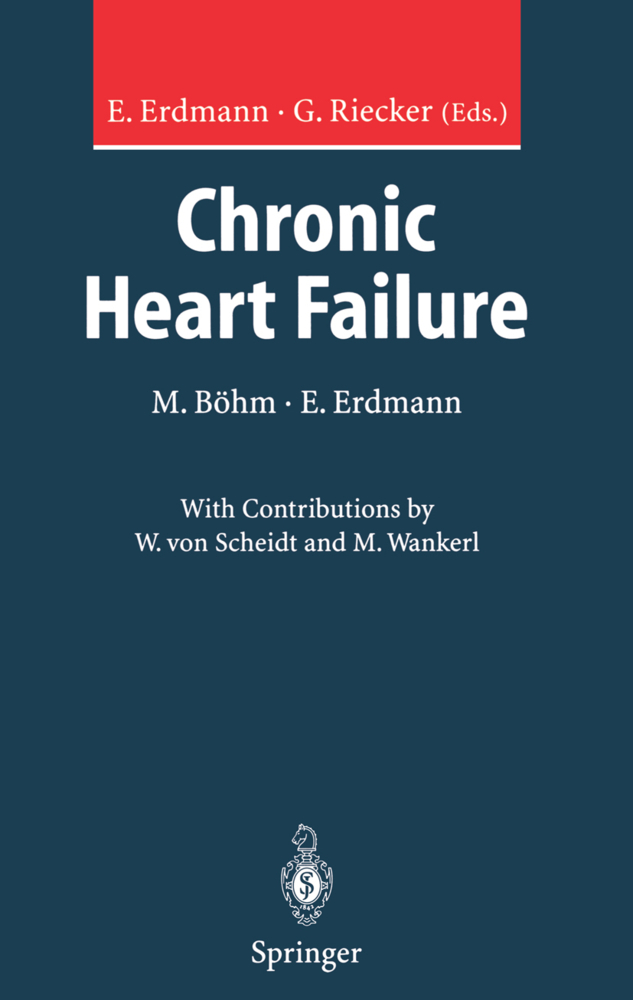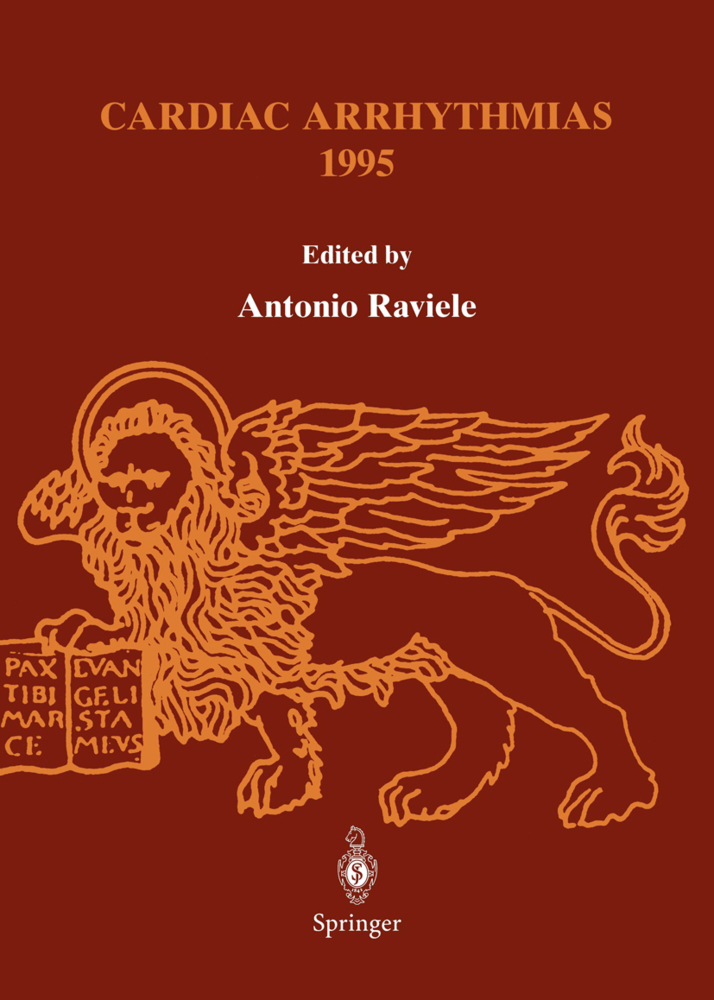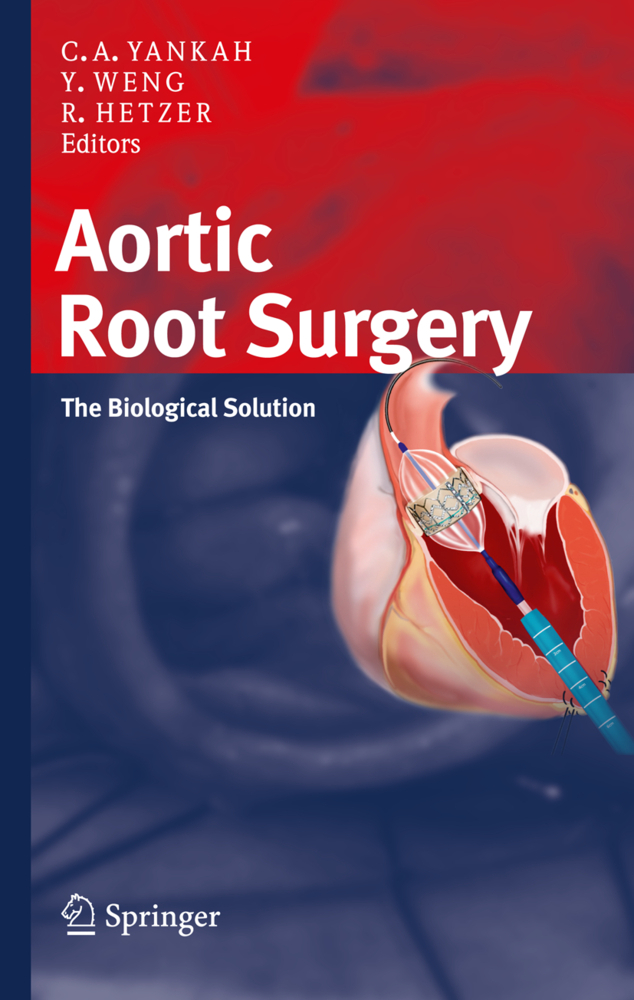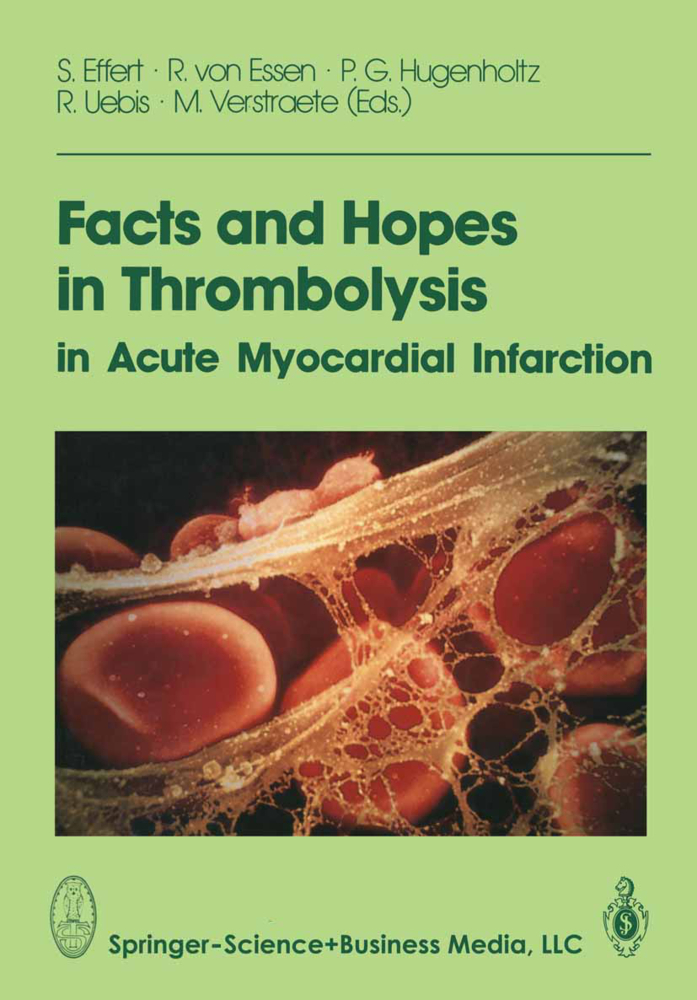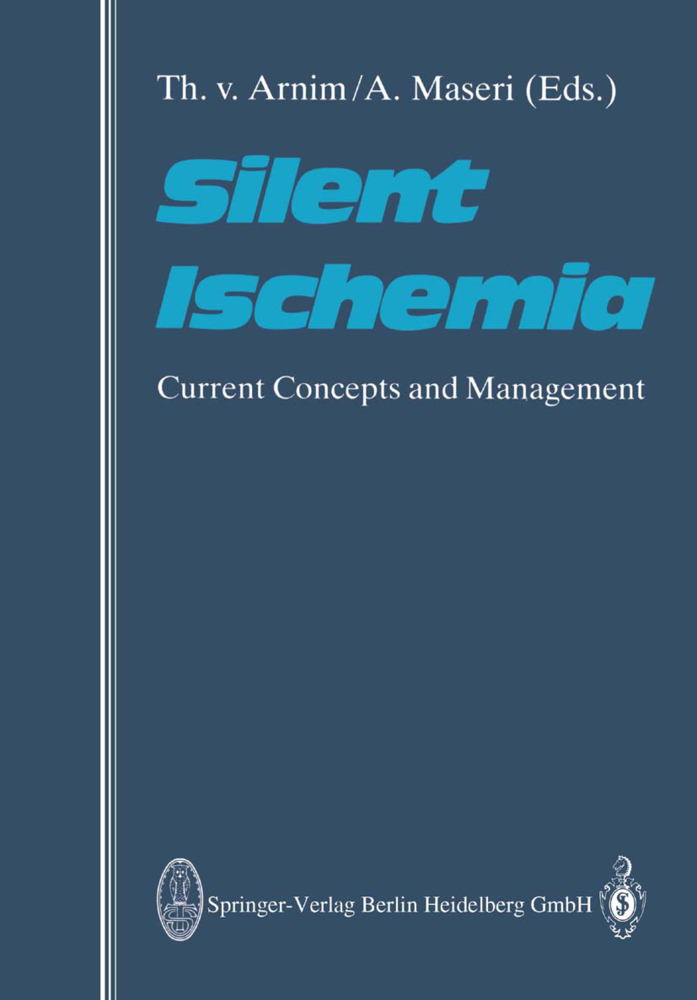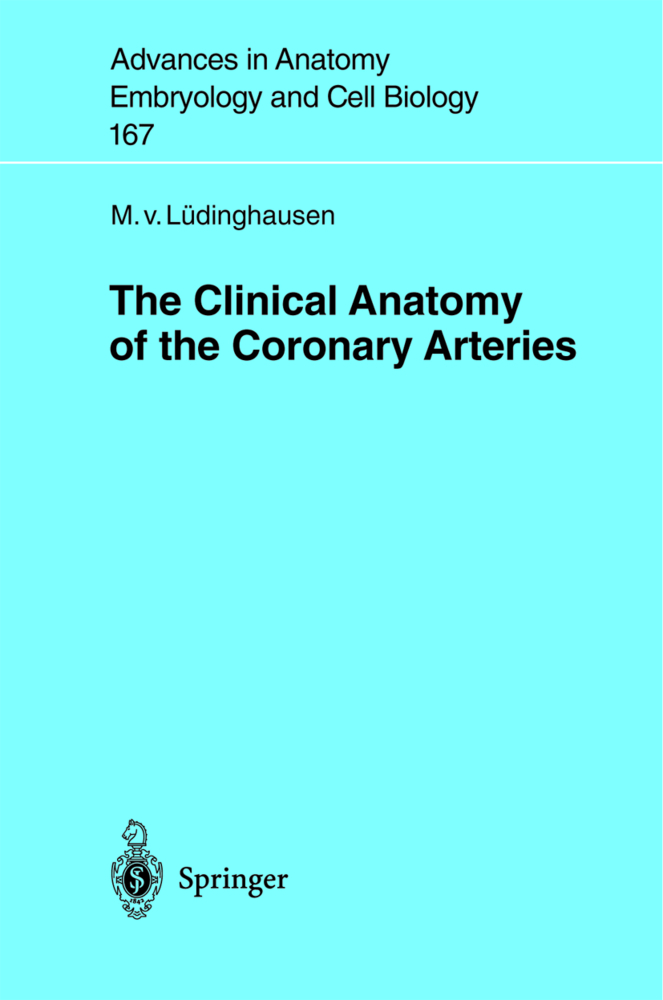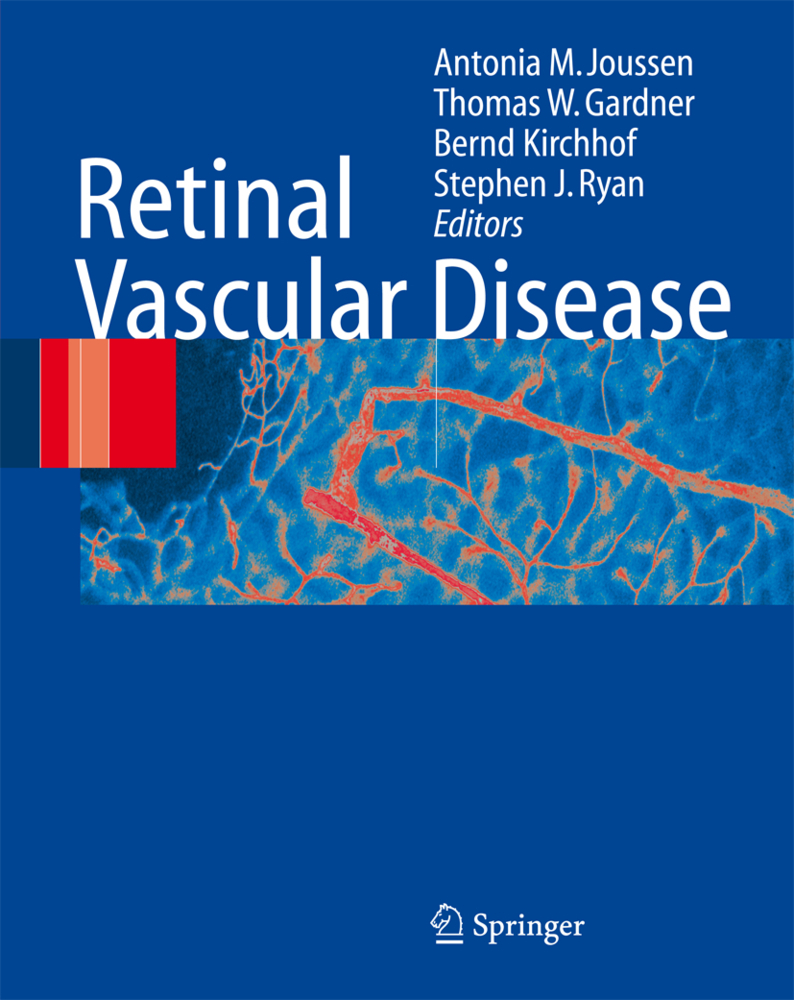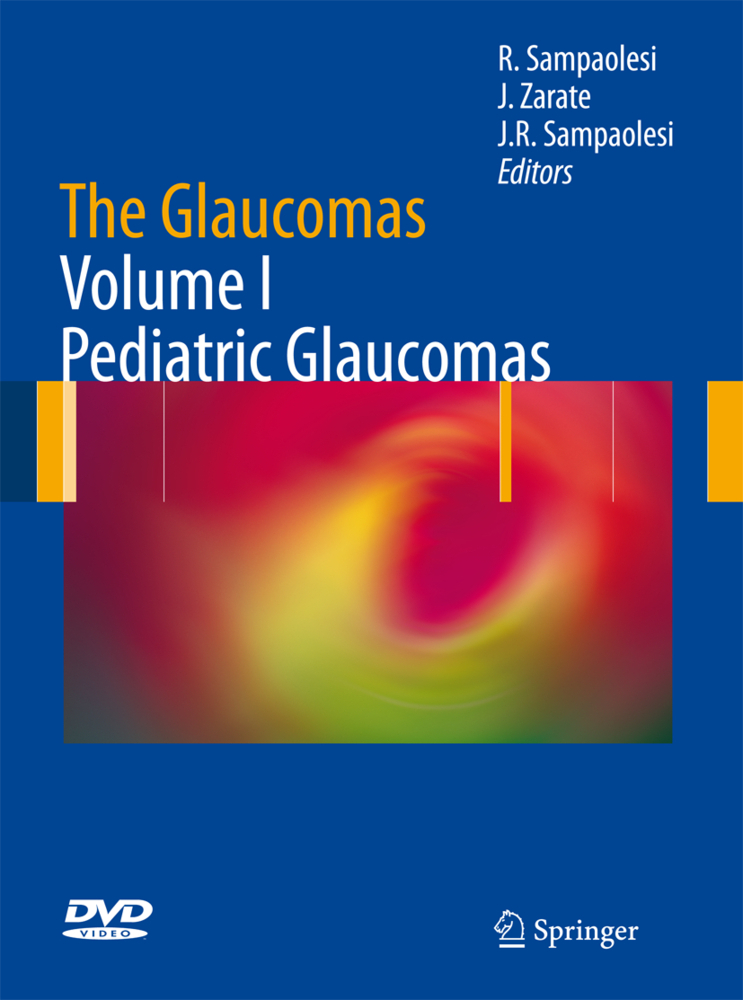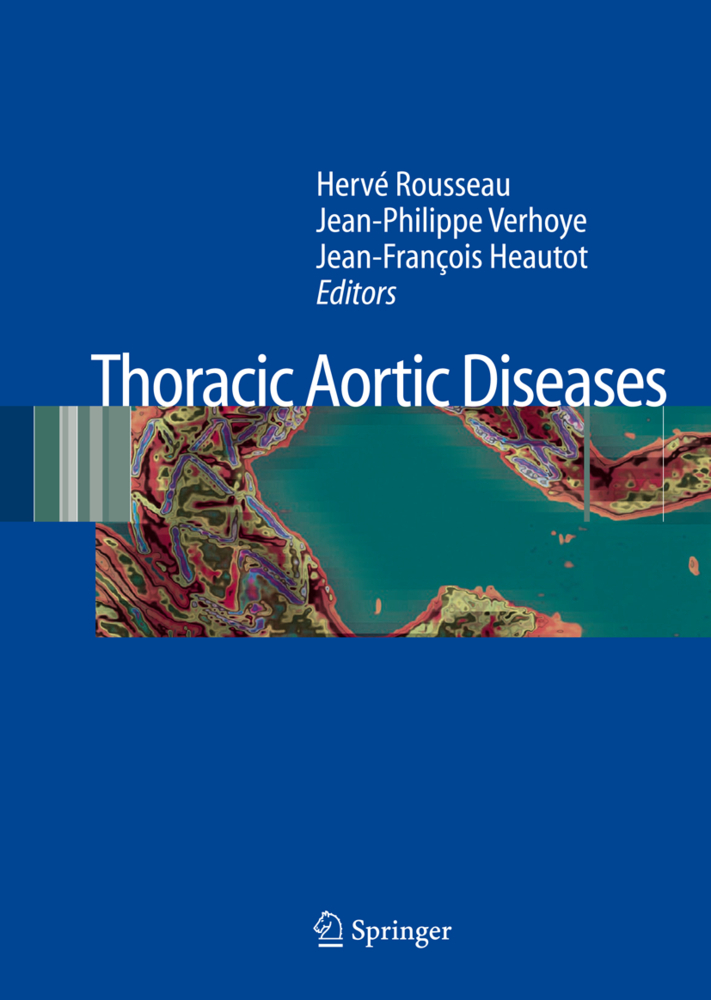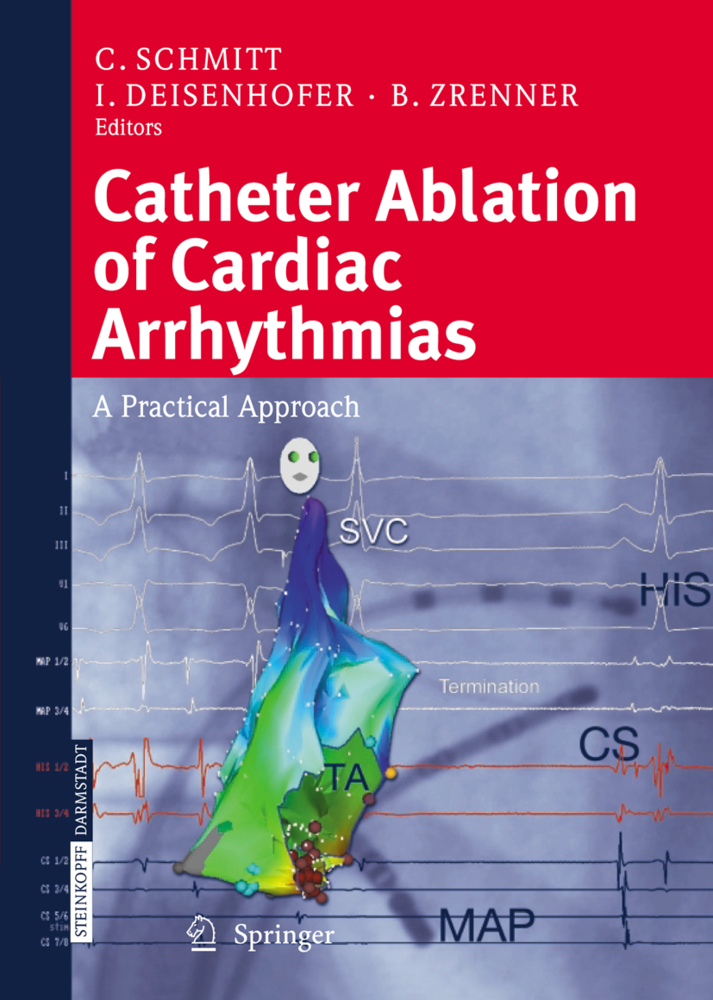Chronic Heart Failure
Chronic Heart Failure
Throughout the past decades, the understanding of the pathophysiology of chronic heart failure and the therapeutic approach to this condition have un dergone considerable change. New developments are reported every year. Perhaps it is because of this continuing interest of researchers and physi th cians that the chapter on chronic heart failure of the 4 edition of Klinische Kardiologie has been so positively received. Several colleagues asked the authors to publish the chapter on chronic heart failure separately, because it would be more practical to use in daily work. When the request for an En glish version of this chapter reached the authors and Springer-Verlag, we were happy, on the one hand, because of the interest, but did wonder whether it would be wise to translate a typically German textbook into Eng lish. We invite you to send us your critical comments. Although Guidelines for the Treatment of Heart Failure have been pub lished recently by the WHO, by the European Society of Cardiology, and by the American Heart Association Task Force clinicians, practitioners, and stu dents still seem to need , a comprehensive view with emphasis on pathophys iology, epidemiology and therapy. The authors are grateful to Springer-Verlag for the good co-operation and tremendous personal commitment in making the English edition of Chronic Heart Failure possible. We hope to give our readers a good overview on this important clinical syndrome, one which re quires intelligent clinical research and sound clinical practice as weIl.
3 Normal and Pathological Anatomy
4 Pathophysiology
4.1 Molecular Mechanisms of Contraction
4.2 Regulation of the Contractile Force
4.3 Compensatory Mechanisms
4.4 Determinants and Assessment of the Cardiac Function
4.5 Blood Supply of the Organs and Cardiac Output Capacity
4.6 Musculoskeletal Metabolism in Heart Failure
4.7 Vascular periphery in Heart Failure
4.8 Pathogenesis of Cardiac Oedema
5 Clinical Course and Symptomatology
5.1 Forward and Backward Failure
5.2 Systolic and Diastolic Heart Failure
5.3 Low-Output and High-Output Heart Failure
5.4 Acute and Chronic Heart Failure
5.5 Classification Criteria for Heart Failure (Revised NYHA Classification)
6 Diagnosis and Differential Diagnosis of Heart Failure
6.1 Principles of Diagnosis
6.2 Diagnostic Procedures, Overview
6.3 History
6.4 Physical Examination
6.5 ECG
6.6 Radiological Examination of the Thorax
6.7 Echocardiography and Doppler Echocardiography
6.8 Heart Catheterization
6.9 Myocardial Biopsy
6.10 Computed Tomography
6.11 Nuclear Spin Tomography
6.12 Nuclear Medicine Procedures
6.13 New Haemodynamic Monitoring Methods
6.14 Conclusions
7 Principles of Therapy
7.1 General and Specific Therapy
7.2 Aims of Therapy
8 Therapy with Cardiac Glycosides
8.1 Mechanism of Action
8.2 Pharmacokinetics
8.3 Pharmacodynamics
8.4 Age-Dependent Regulation of the Cardiac Glycoside Receptors
8.5 Effect on the Failing Myocardium
8.6 Interaction of Drugs with Digitalis
8.7 Measurement of the Digitalis Concentration in the Blood
8.8 Cardiac Glycosides in Atrial Fibrillation and Flutter
8.9 Cardiac Glycosides in Sinus Tachycardia and Paroxysmal Atrial Fibrillation
8.10 Cardiac Glycosides in Acute Heart Failure.-8.11 Cardiac Glycosides in Myocardial Infarction
8.12 Cardiac Glycosides in Chronic Heart Failure
8.13 Lacking Indication for Digitalis
8.14 Choosing the Cardiac Glycoside
8.15 Dosage of Digoxin and its Derivates
8.16 Side Effects and Intoxication
8.17 Therapy of Cardiac Glycoside Intoxication
8.18 Contraindications for Cardiac Glycosides
9 Therapy with Diuretics
9.1 Classification According to the Site of Action
9.2 Classification According to Potency
9.3 Side Effects of Diuretic Therapy
9.4 Other Fluid Liquid Extraction Methods
9.10 General Hypokalaemia
10 Therapy with ACE Inhibitors
10.1 Pharmacodynamics
10.2 Pharmacokinetics
10.3 Established Indications
10.4 Effects on Left Ventricular Dilatation
10.5 Dosage
10.6 Choosing the right ACE Inhibitor
10.7 Side Effects:
10.8 Interaction with Other Drugs
10.9 Contraindications
10.10 Treatment with Other Vasodilators
11 Therapy with Other Drugs
11.1 Calcium Antagonists
11.2 Inodilators (cAMP Phosphodiesterase Inhibitors)
11.3 Catecholamines
11.4 ?-Receptor Blockers
11.5 Experimental Therapies
11.6 Antiarrhythmic Therapy in Cases of Heart Failure
11.7 Pacemaker Therapy
11.8 Surgical Therapy of Heart Failure (Cardiomyoplasty)
11.9 Anticoagulation
11.10 Acutely Deteriorated and Therapy-Resistant Heart Failure
12 Mechanical Circulatory Support
12.1 Indications and Contraindications
12.2 Methods
12.3 Prognosis
13 The Ageing Heart
13.1 Ageing and Physical Strain
13.2 Morphological Changes
13.3 Functional Changes
13.4 Cardiac Regulation in the Elderly under Strain
13.5 Cardiac Diseases in the Elderly
13.6 Summary and Conclusions
14 Aspects of Altered Gene Expression in Heart Failure and Myocardial Hypertrophy
14.1 Examination of theProtein Biosynthesis and Gene Expression
14.2 Structure and Function of the Contractile Apparatus
14.3 Contractile Apparatus in Cardiac Hypertrophy and Heart Failure
14.4 Intracellular Calcium Homeostasis
14.5 Signal Transduction in the Cell Membrane
14.6 Clinical Consequences
References.
1 Definition
2 Epidemiology3 Normal and Pathological Anatomy
4 Pathophysiology
4.1 Molecular Mechanisms of Contraction
4.2 Regulation of the Contractile Force
4.3 Compensatory Mechanisms
4.4 Determinants and Assessment of the Cardiac Function
4.5 Blood Supply of the Organs and Cardiac Output Capacity
4.6 Musculoskeletal Metabolism in Heart Failure
4.7 Vascular periphery in Heart Failure
4.8 Pathogenesis of Cardiac Oedema
5 Clinical Course and Symptomatology
5.1 Forward and Backward Failure
5.2 Systolic and Diastolic Heart Failure
5.3 Low-Output and High-Output Heart Failure
5.4 Acute and Chronic Heart Failure
5.5 Classification Criteria for Heart Failure (Revised NYHA Classification)
6 Diagnosis and Differential Diagnosis of Heart Failure
6.1 Principles of Diagnosis
6.2 Diagnostic Procedures, Overview
6.3 History
6.4 Physical Examination
6.5 ECG
6.6 Radiological Examination of the Thorax
6.7 Echocardiography and Doppler Echocardiography
6.8 Heart Catheterization
6.9 Myocardial Biopsy
6.10 Computed Tomography
6.11 Nuclear Spin Tomography
6.12 Nuclear Medicine Procedures
6.13 New Haemodynamic Monitoring Methods
6.14 Conclusions
7 Principles of Therapy
7.1 General and Specific Therapy
7.2 Aims of Therapy
8 Therapy with Cardiac Glycosides
8.1 Mechanism of Action
8.2 Pharmacokinetics
8.3 Pharmacodynamics
8.4 Age-Dependent Regulation of the Cardiac Glycoside Receptors
8.5 Effect on the Failing Myocardium
8.6 Interaction of Drugs with Digitalis
8.7 Measurement of the Digitalis Concentration in the Blood
8.8 Cardiac Glycosides in Atrial Fibrillation and Flutter
8.9 Cardiac Glycosides in Sinus Tachycardia and Paroxysmal Atrial Fibrillation
8.10 Cardiac Glycosides in Acute Heart Failure.-8.11 Cardiac Glycosides in Myocardial Infarction
8.12 Cardiac Glycosides in Chronic Heart Failure
8.13 Lacking Indication for Digitalis
8.14 Choosing the Cardiac Glycoside
8.15 Dosage of Digoxin and its Derivates
8.16 Side Effects and Intoxication
8.17 Therapy of Cardiac Glycoside Intoxication
8.18 Contraindications for Cardiac Glycosides
9 Therapy with Diuretics
9.1 Classification According to the Site of Action
9.2 Classification According to Potency
9.3 Side Effects of Diuretic Therapy
9.4 Other Fluid Liquid Extraction Methods
9.10 General Hypokalaemia
10 Therapy with ACE Inhibitors
10.1 Pharmacodynamics
10.2 Pharmacokinetics
10.3 Established Indications
10.4 Effects on Left Ventricular Dilatation
10.5 Dosage
10.6 Choosing the right ACE Inhibitor
10.7 Side Effects:
10.8 Interaction with Other Drugs
10.9 Contraindications
10.10 Treatment with Other Vasodilators
11 Therapy with Other Drugs
11.1 Calcium Antagonists
11.2 Inodilators (cAMP Phosphodiesterase Inhibitors)
11.3 Catecholamines
11.4 ?-Receptor Blockers
11.5 Experimental Therapies
11.6 Antiarrhythmic Therapy in Cases of Heart Failure
11.7 Pacemaker Therapy
11.8 Surgical Therapy of Heart Failure (Cardiomyoplasty)
11.9 Anticoagulation
11.10 Acutely Deteriorated and Therapy-Resistant Heart Failure
12 Mechanical Circulatory Support
12.1 Indications and Contraindications
12.2 Methods
12.3 Prognosis
13 The Ageing Heart
13.1 Ageing and Physical Strain
13.2 Morphological Changes
13.3 Functional Changes
13.4 Cardiac Regulation in the Elderly under Strain
13.5 Cardiac Diseases in the Elderly
13.6 Summary and Conclusions
14 Aspects of Altered Gene Expression in Heart Failure and Myocardial Hypertrophy
14.1 Examination of theProtein Biosynthesis and Gene Expression
14.2 Structure and Function of the Contractile Apparatus
14.3 Contractile Apparatus in Cardiac Hypertrophy and Heart Failure
14.4 Intracellular Calcium Homeostasis
14.5 Signal Transduction in the Cell Membrane
14.6 Clinical Consequences
References.
Böhm, Michael
Erdmann, Erland
Erdmann, E.
Riecker, G.
Scheidt, W.von
Wankerl, M.
| ISBN | 978-3-540-63579-6 |
|---|---|
| Artikelnummer | 9783540635796 |
| Medientyp | Buch |
| Copyrightjahr | 1997 |
| Verlag | Springer, Berlin |
| Umfang | XII, 276 Seiten |
| Abbildungen | XII, 276 p. 122 illus., 81 illus. in color. |
| Sprache | Englisch |

